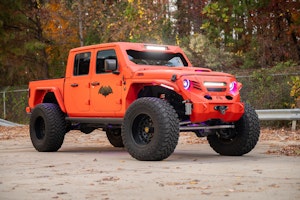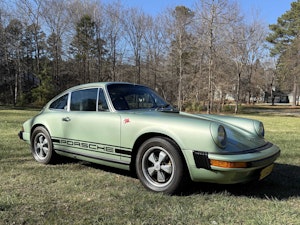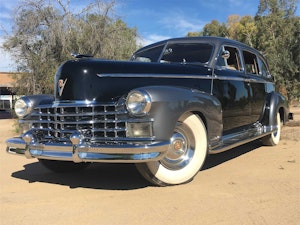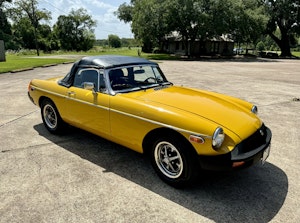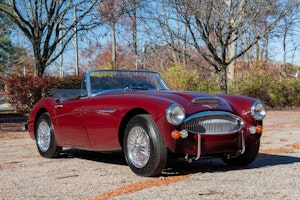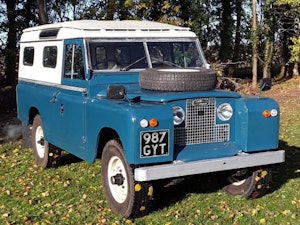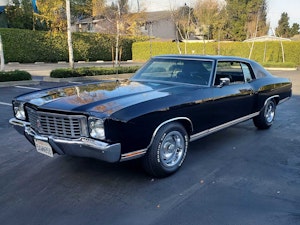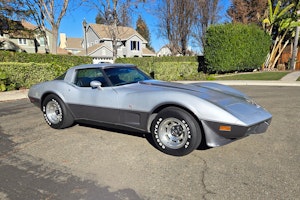The Sturgis Motorcycle Rally’s curiosities and collectibles
The Sturgis Motorcycle Rally is primarily a Harley-Davidson event and a big expression of Americana tailored to bikers’ tastes. But at this year’s rally, I saw everything from a new Triumph Commander to an old CCM enduro bike, both built in England. Riders could test a Ducati XDiavel or check out the Yamaha SCR950, a new V-twin in retro Scrambler style.
And there’s something beautiful and thrilling about seeing a rider aboard an ancient Harley, crossing through an intersection in one of these former mining towns. But whether you’re into imports, Indians or one of the countless HDs, South Dakota’s Black Hills are simply a great place to look at motorcycles. Following are some noteworthy bikes, in alphabetical order, spotted in or near Sturgis, S.D.:
1968 BSA Thunderbolt 650
The BSA name had much the same magic as Triumph’s, and the Thunderbolt 650, produced from 1964 to 1972, had real flash. It was “ideal for high speed touring or sports riding,” an advertisement said. A single carburetor fed the air-cooled, overhead-valve 654-cc parallel-twin engine, and thanks in part to the dry weight under 400 lb, the bike could top 100 mph, just a tick slower than the twin-carb BSA Lightning. The plated tank and fenders supplied a special appeal. My best guess is the Thunderbolt seen here is a 1968.
1909 Harley-Davidson 5-D
William S. Harley and Arthur Davidson started out in 1903 with an inlet-over-exhaust, single-cylinder bike that was much more substantial than just a converted bicycle; they would stick with the so-called F-head engine, enlarging and perfecting it, until 1929. But the 45-degree, 811-cc V-twin introduced in 1909 represented the Motor Company’s future. The 5-D that used it also featured magneto ignition and belt drive. Weighing 275 lb, the bike was capable of a brisk 45 mph. In Harley’s rapidly expanding network of dealerships, it sold for $375. Now, six-figure prices carry the day for the early V-twins. Also seen here: a CHP replica and a ’36 Knucklehead.
1936 Harley-Davidson EL “Knucklehead”
“This is the motorcycle that finally put Harley-Davidson’s engineering ahead of Indian’s,” writes historian Jerry Hatfield. Swoopy forms and the instrument display’s integration into the tank were only part of the story of the E-series, a.k.a. the Sixty-One. Adopting an overhead-valve arrangement, the 989-cc V-twin produced up to 40 hp at 4,800 rpm. The dry sump allowed it to nestle into the new twin-cradle frame. A four-speed, constant-mesh transmission was another advance. Sold for $380 as a new bike, the iconic Knucklehead now commands more than $150,000 at auction.
Marketplace
Buy and sell classics with confidence
Harley-Davidson Servi-car
More than one observer expressed surprise at the number of trikes participating in the Sturgis rally. They derive from the popularity of the Harley-Davidson Servi-Car, which was introduced in 1932 to capture new customers with utilitarian needs. The Servi-Car used a solid rear axle and the familiar 742-cc flathead V-twin. A striking example of form following function, the Servi-Car always had its own special charm as we see in this model, which we estimate to be from the early 1950s. Production averaged about 1,000 annually and continued for 42 years.
Harley-Davidson FL Hydra-Glide
Because of the foot-operated shifter, speedometer graphics and two hours surfing the Web, your writer—who got a basic Harley education at Sturgis—says you’re looking at a 1954 FLF Hydra-Glide. The Illinois license plate “54 145” must mean something, too. Here’s hoping an obvious cue wasn’t overlooked (I was in a hurry to catch up to my group). If I’m right, the sport-solo model was priced at $1,015 when new, although the dual exhausts were optional. The throbbing overhead-valve 1,207-cc is probably the reason I told my grandmother when I was three years old, “I’m going to ride a motorcycle when I’m big.” Original-looking in pockmarked Pepper Red, the specimen was the best bike of my Sturgis visit. I’ve ridden a lot of motorcycles but never one with the Panhead’s panache.
Honda GL1000 Gold Wing
Until the Honda GL1000 – the Gold Wing – debuted in 1975, long-distance touring was the domain of Harleys and BMWs. The mighty Honda’s opposed four-cylinder engine displaced 999-cc. Being on the heavy side, the Gold Wing could still scoot: a 13-second quarter-mile at 100 mph. Innovations included liquid cooling, shaft drive and a fuel tank under the seat. More powerful models with standard fairings and luggage would follow, but the naked, slightly ratty GL1000 seen here brought just the right attitude to Sturgis.
Kawasaki ZRX1200R
Two hours in Sturgis is enough to get accustomed to nakedness on downtown sidewalks and near-nakedness at bikini bike-washing stations on strategic corners. (At the latter, girls who dread a chill breeze toil in benefit of suicide prevention and other causes.) For some reason, a Kawasaki naked bike with a bikini fairing was the last thing I expected to see. The ZRX1200R was made in Japan from 2001 to 2008, and it evokes Kawasaki’s collectible KZ1000R Eddie Lawson-replica of the 1980s. The ZRX1200R offers a relaxed riding position but superbike specs. Power comes from a liquid-cooled, DOHC inline 1164-cc four-cylinder engine. The dual-rotor front disc brakes have six-piston calipers, and the rear shocks are augmented with remote fluid reservoirs. Our rider was stuck in Lazelle Street traffic, but the bike was up for a track day if the occasion arises.




